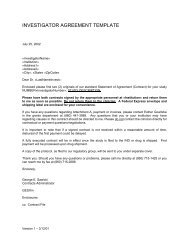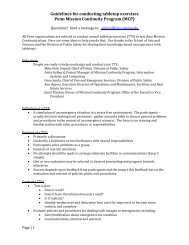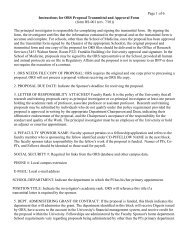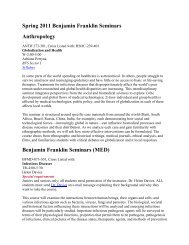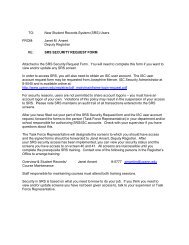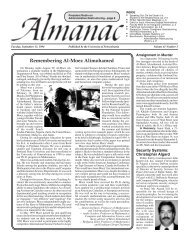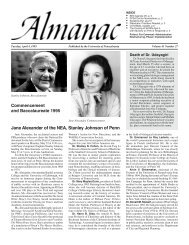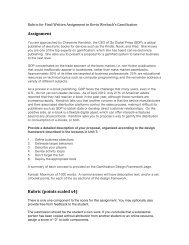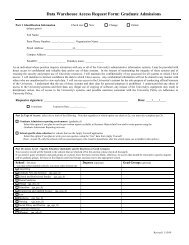Transitional Care for Older Adults: A Cost Effective Model
Transitional Care for Older Adults: A Cost Effective Model
Transitional Care for Older Adults: A Cost Effective Model
Create successful ePaper yourself
Turn your PDF publications into a flip-book with our unique Google optimized e-Paper software.
• The intervention is notable <strong>for</strong> its emphasis on identifying patients’ and caregivers’goals, individualized plans of care developed and implemented by APNs incollaboration with patients’ physicians, educational and behavioral strategies toaddress patients’ and caregivers’ needs, and coordination and continuity of care acrosssettings.• Dr. Naylor and colleagues tested the model in a series of studies designed to evaluatethe intervention’s effects on costs and outcomes, identify patient groups <strong>for</strong> which theintervention might be most effective, and define the intensity and duration of servicesnecessary to improve outcomes.First study finds thattransitional care improvesoutcomes <strong>for</strong> elderly cardiacpatients in the short-termThe first study involved 276 elderly patients (aged 70 or older) hospitalized <strong>for</strong> eithermedical or surgical treatment of selected cardiac conditions at the University ofPennsylvania. Patients were randomly assigned to receive usual care (control group) orthe intervention, which included discharge planning by an APN and telephone contactwith patients <strong>for</strong> two weeks after discharge. Outcomes of care were measured 2, 6, and12 weeks after discharge.• The intervention had positive effects <strong>for</strong> medical patients, but did not changeoutcomes <strong>for</strong> surgical patients. At the 6-week point, the medical intervention grouphad 61% fewer readmissions to the hospital, and 70% fewer inpatient days oncereadmitted, compared to the control group. Ten per cent of the intervention groupwas readmitted in the first six weeks, compared to 23% in the control group.• At the 6-week point, total charges <strong>for</strong> health care services after discharge <strong>for</strong> themedical intervention group were $295,598 less than charges <strong>for</strong> the control group.Average charges <strong>for</strong> the intervention group 6 weeks after discharge were $2,453,compared with $6,746 <strong>for</strong> the control group. These savings offset, by far, the averagecost of APN services in the intervention group, estimated at $93 per patient.• Beyond the 6-week point, the positive benefits of the intervention began to decline.Between 6 and 12 weeks after discharge, there were no differences in readmissions oraverage charges <strong>for</strong> health care services between the medical intervention and controlgroup.• Further analysis revealed that the intervention had its greatest effect on elderlypatients with many comorbid conditions and functional deficits. Based on thesefindings, the research team developed and tested a more intensive interventiontargeted at more vulnerable patients.Next study shows benefits ofmore intensive transitionalcare targeted at high-riskeldersThe second study involved 363 high-risk elders hospitalized at one of two urbanhospitals in Philadelphia. These patients had a variety of common medical conditionsand were identified as high-risk by criteria developed in the previous study. Patients 65or older were randomly assigned to receive usual care or the intervention, whichincluded APN visits at admission and at least every 48 hours during the hospitalization.The APN was responsible <strong>for</strong> discharge planning and substituted <strong>for</strong> the visiting nurseduring the first 4 weeks after discharge. APNs had weekly telephone contact withpatients and were available 7 days a week. Dr. Naylor and colleagues measuredoutcomes 2, 6, 12, and 24 weeks after discharge.• At 24 weeks after discharge, the intervention group had fewer rehospitalizations,fewer patients with multiple readmissions, and fewer hospital days per patient thanthe control group. Twenty per cent of the intervention group was rehospitalizedwithin 24 weeks, compared to 37% of the control group. Beneficial effects were seenin patients in all diagnostic categories except <strong>for</strong> patients hospitalized with heartfailure. For these patients, the effects of the intervention extended only through 6weeks after discharge.




